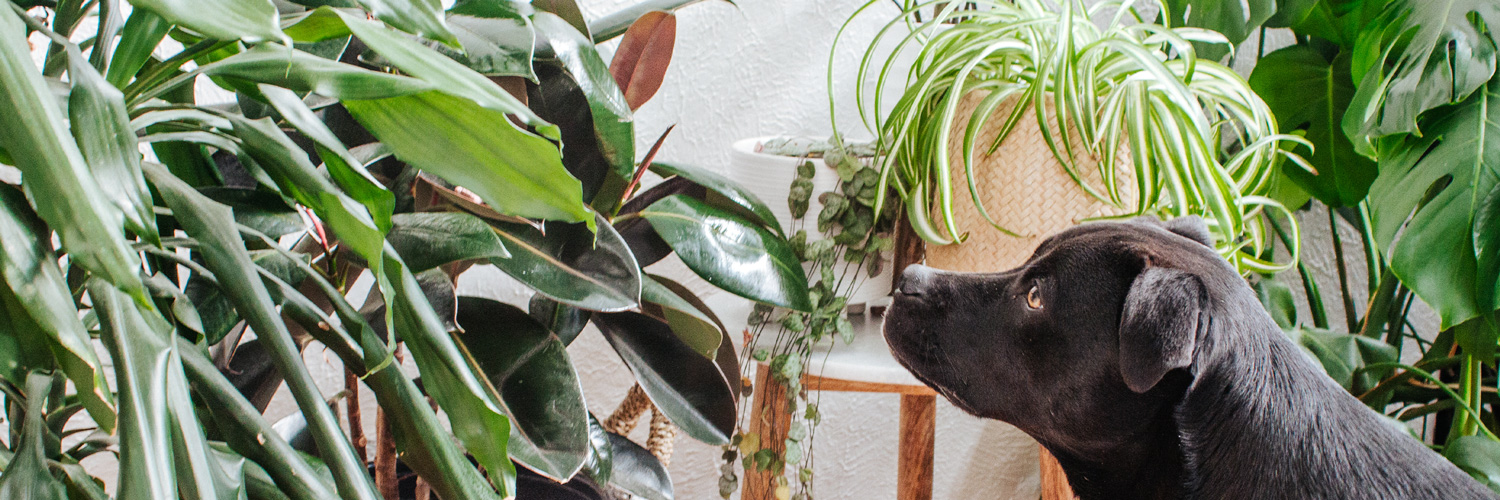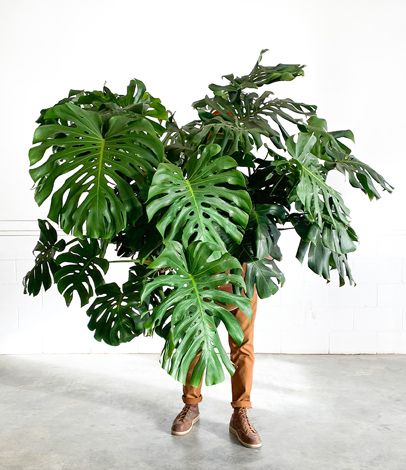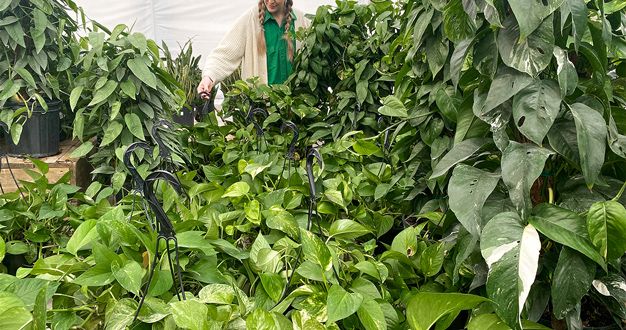
Sharing a home with both plants and pets sounds like an ideal life. That is, until the furry family takes an unwanted interest in your plant obsession too. Not sure which houseplants are safe for your dog and cat to investigate? Here, we share a few of our favorite houseplants for the pet-friendly household.
Creating a Safe Home
Not all pets are attracted to houseplants, but some cats and dogs can’t keep from biting or chewing on the foliage. And plant parents are understandably concerned about the effect this can have on their pets’ health. According to the ASPCA, consumption of any plant can cause a reaction such as upset stomach, vomiting, or diarrhea. Fortunately, with many houseplants this reaction is mild, and the plant can still be considered non-toxic for pets. And with other tactics as well – like placing your plants in plant stands or hangers – it’s possible to remove the temptation too.
Certain plants do elicit more serious responses, and if you’re wondering about the plants in your collection, the ASPCA has an extensive list of plants that are considered toxic to dogs and cats.
Here, we’ve selected a few of the most popular houseplants in our collection deemed non-toxic by the ASPCA. Each has its own additional features that make it a good roommate for your pets too.
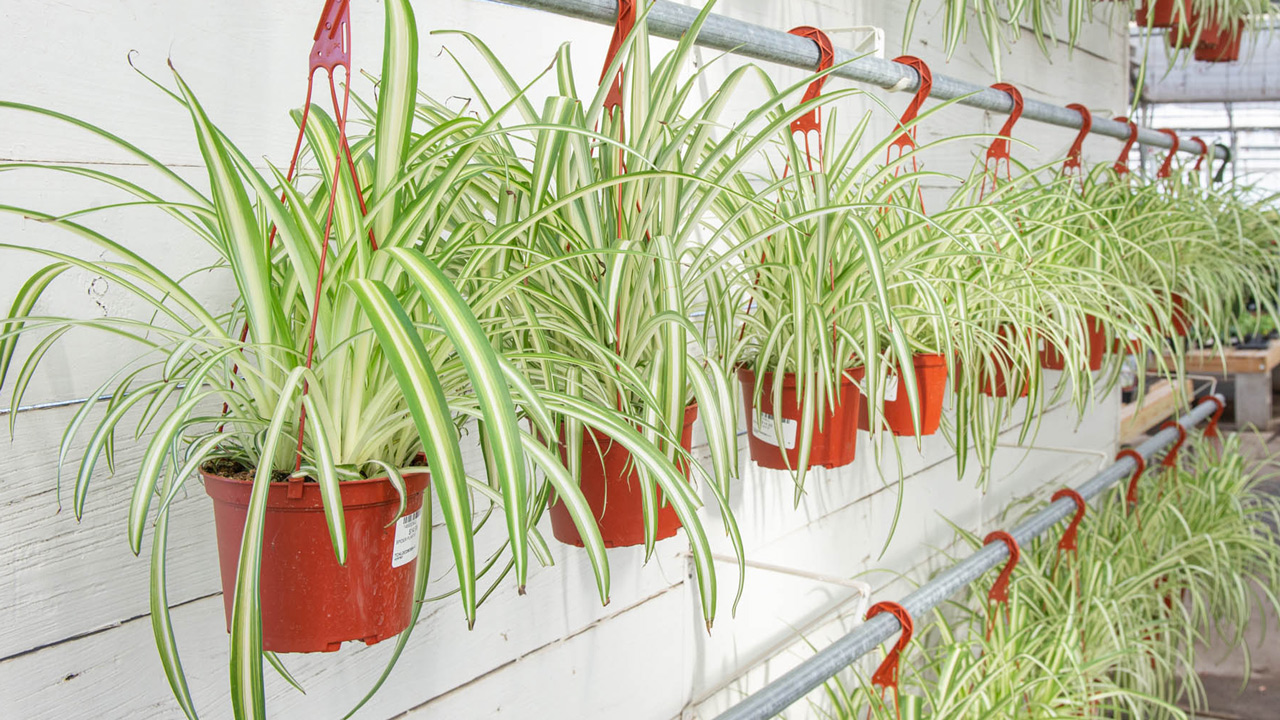
Spider Plant // Chlorophytum comosum
Spider plant is famous for all those enticing little plantlets dangling everywhere, so you’d think it might be problematic for a home with cats. But spider plant looks best when it’s hanging high – well above the reach of swatting paws. Just be sure that wherever you hang it, your spider plant enjoys lots of bright, indirect light and consistent moisture in its soil.
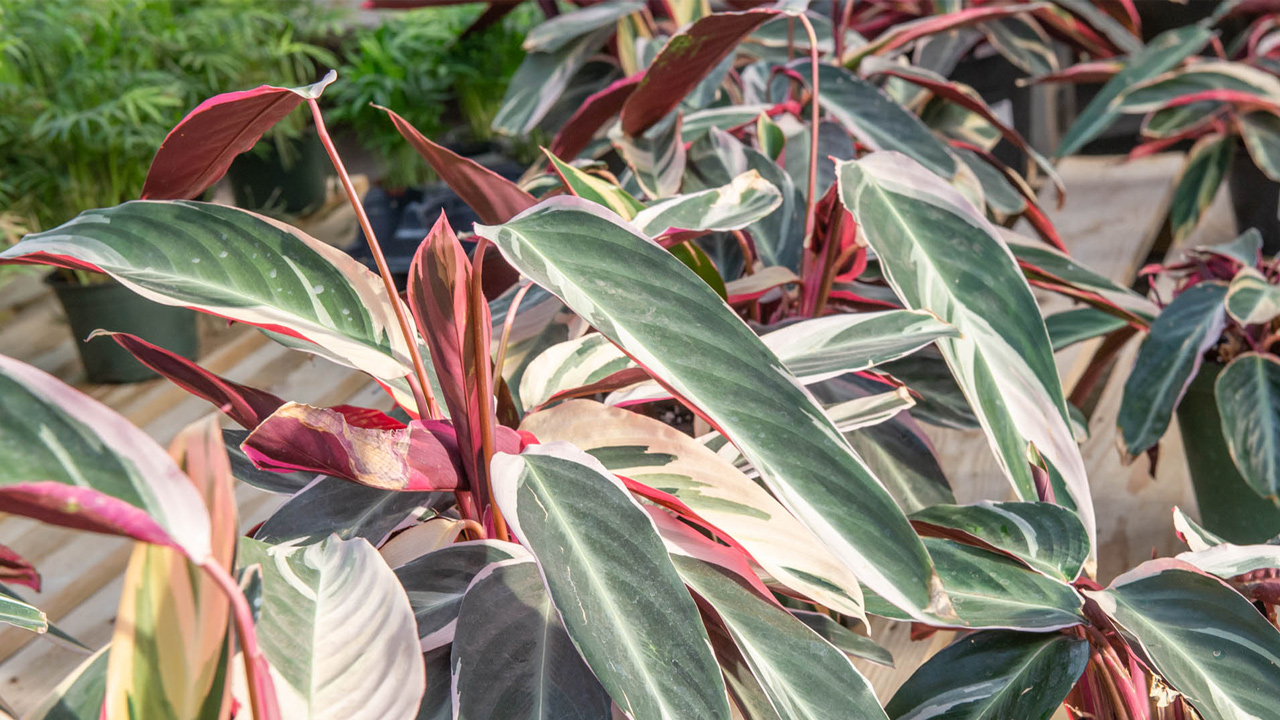

Calathea // Calathea spp.
With common names like peacock plant and zebra plant, calathea fits right in the family with your resident animals. And in most species of Calathea, the leaves are broad and richly patterned, giving your “jungle” kitty or “wild” dog a proper backdrop for some stunning photos. Like most houseplants, calathea enjoys bright, indirect light – but with this moisture-loving genus, consistent watering is a must.
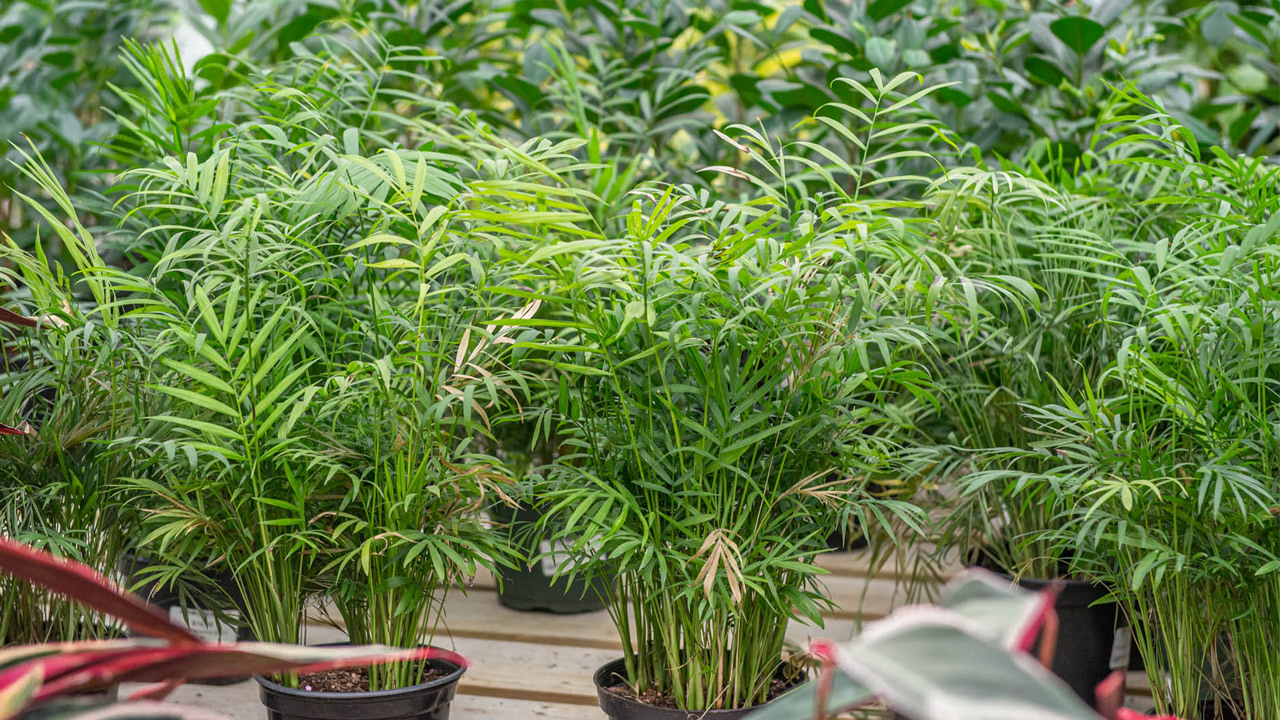
Neantha Bella Palm // Chamaedorea elegans
Neanthe bella palm finds its way into so many houseplant collections because of its graceful beauty and its amazingly tolerant personality. This forgiving nature extends to the batting, tipping, or biting your pets may inflict on it too. And because Neanthe bella can thrive under so many different light levels, if your pet does develop an obsession with it, you can move it to just about any pet-free zone you choose.
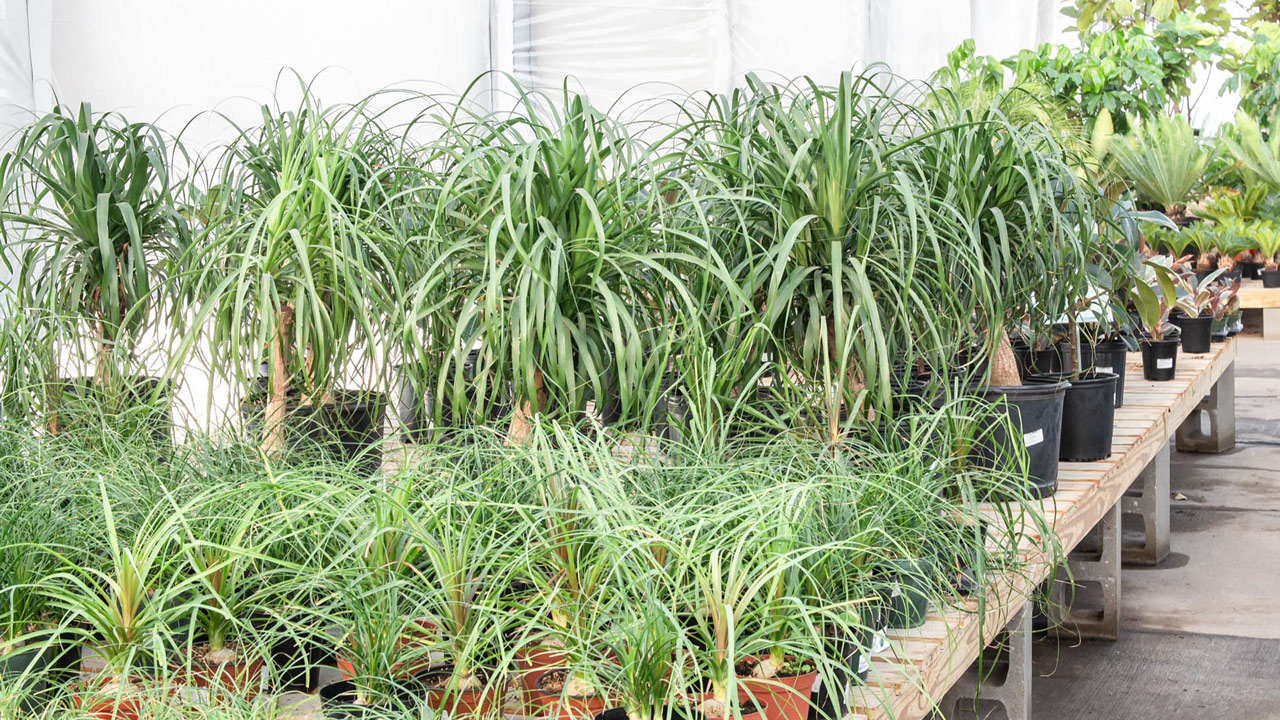
Ponytail Palm // Beaucarnea recurvata
With a thick, water-storing trunk to anchor it, ponytail palm defies any curious pet’s attempt to knock it over. The abundant, curling foliage might be fun to swat, but these stiff and kind of coarse leaves can take the abuse – and probably aren’t too much fun to chew on either. As for care, although the word ‘palm’ is in its common name, ponytail palm is a true succulent and prefers lots of bright light and dry, fast-draining cactus soil.
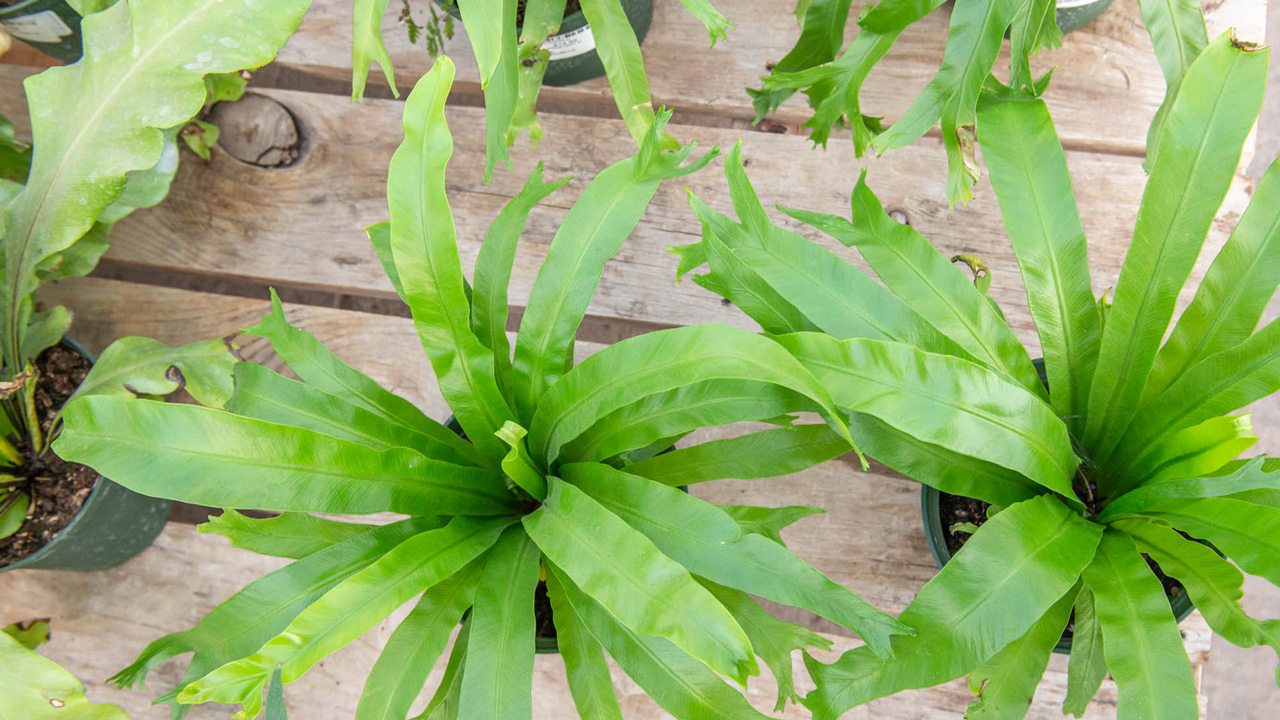
Bird Nest Fern // Asplenium nidus
If you love ferns and need a variety that plays well with pets, then bird nest fern might be your answer. Unlike most ferns – whose feathery, highly dissected foliage can be a bit delicate – bird nest fern has broader, strap-like fronds, giving it an added toughness against inquisitive paws and teeth. But like other members of the fern clan, bird nest fern enjoys bright, indirect light and consistent soil moisture.
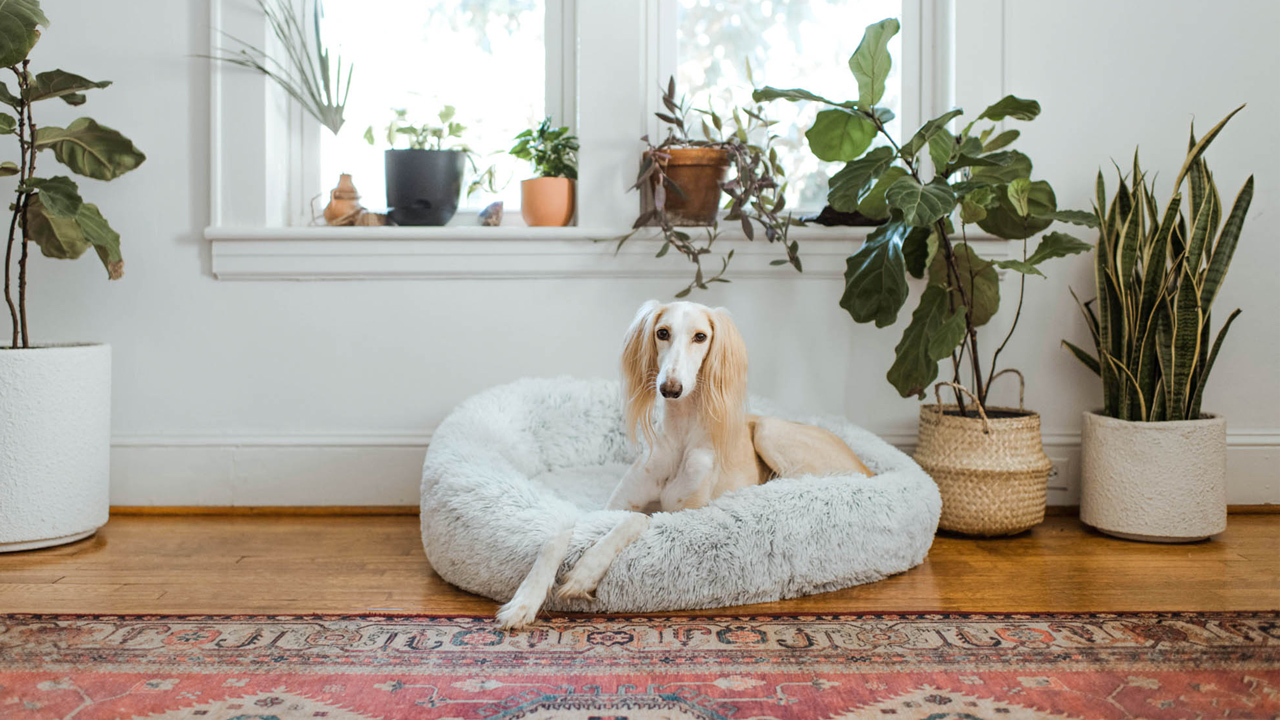
Living Together in Peace
Plants and pets are both valuable and rewarding additions to our lives – and when they get along with each other, that’s even better. If you have any questions about introducing a particular plant to your pet family – or adding a pet to your plant family – just ask. We’ll be glad to help.

